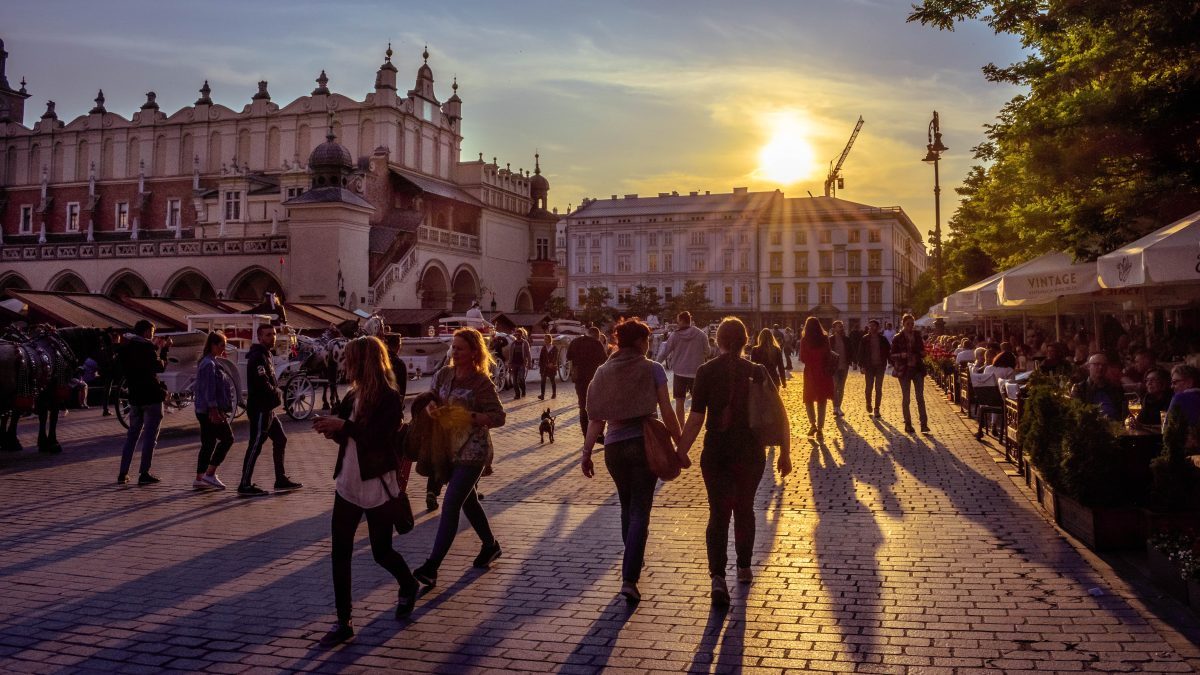Top 10 Tourist Attractions in Luxor: An Ultimate Guide
Luxor, Egypt, famously known as the world’s largest open-air museum, attracts millions of tourists each year. The city’s magnificent temples, tombs, and ancient ruins tell a story that dates back over 4000 years. With the Top 10 Tourist Attractions in Luxor, you can experience the best of what Luxor has to offer. This multi-day tour is led by an Egyptologist guide and includes guided tours of Luxor’s top attractions, such as Karnak Temples, the Luxor West Bank, and the Necropolis of Thebes. So, here’s an ultimate guide to the top 10 tourist attractions in Luxor to help you plan your trip.1. Valley of the Kings and Queens
Start your journey by visiting the Valley of the Kings and Queens. The Valley of Kings is the burial ground of Pharaohs and nobles from the ancient Egyptian New Kingdom. The valley has over 60 tombs that have been discovered so far, and the most famous tomb is that of Tutankhamun. The Valley of Queens is the resting place for royal wives and children.2. Luxor Temple
Luxor Temple is one of the best-preserved ancient Egyptian temples in the world. Located on the east bank of the Nile River, it was built as a dedication to the gods Amun, Khons, and Mut. Visitors will discover several features in the temple including sphinxes, statues, and hieroglyphics.3. Karnak Temples
One of the must-see attractions in Luxor is the Karnak Temples. The temples were dedicated to the gods Amun, Mut, and Khonsu and cover an area of around 200 acres. Visitors can explore several structures within the temple such as the Hypostyle Hall, the sacred lake, and the obelisks.4. Deir el-Bahri (Hatshepsut Temple)
Deir el-Bahri, located in the west bank of the Nile River, is a complex of mortuary temples and tombs. The temple belonged to Queen Hatshepsut and was built over a period of 15 years. Visitors can explore various features, including stunning murals, reliefs, and statues.5. Luxor West Bank
The Luxor West bank is home to some of the most significant cultural sites in Egypt. Visitors can explore the Temple of Medinat Habu, Colossi of Memnon, Valley of the Nobles, and other significant sites.6. Luxor Museum
Luxor Museum features artifacts from ancient Egyptian times. The museum showcases a range of interesting displays such as pottery, statues, and jewelry. Visitors can also view the museum’s mummies, which are well-preserved.7. Habu Temple
The Habu Temple is located in the west bank of Luxor and is the second-largest temple in the area. The temple was built in honor of Pharaoh Ramesses III and has remained well-preserved to this day.8. Colossi of Memnon
The Colossi of Memnon is a pair of monumental statues made of quartzite sandstone. The statues depict Pharaoh Amenhotep III sitting on his throne, and the temple is believed to be over 3400 years old.9. Abydos Temple
Abydos Temple, located in the north of Luxor, is an ancient temple dedicated to the god Osiris. The temple is known for its unique features such as the Chapel of Sekhmet and the Grand Processional Way.10. Hot Air Balloon Tour
The Top 10 Tourist Attractions in Luxor includes an optional hot air balloon tour over the Valley of the Kings. Visitors can experience the sunrise from above and enjoy the stunning views of Luxor’s ancient landmarks. Book Your Tour Now In conclusion, Luxor is a city filled with incredible sights and rich history. With the Top 10 Tourist Attractions in Luxor, visitors can explore Luxor’s top attractions with the help of an Egyptologist guide. Whether you are interested in ancient ruins, temples, or museums, Luxor has something to offer for everyone. If you wish to book the tour, you can do so on this website book the tour here. Don’t miss out on an opportunity to experience the wonders of Luxor, Egypt.
Frequently Asked Questions about Luxor
Luxor is a city located in Upper Egypt and is often referred to as the world’s largest open-air museum because it is home to a number of ancient Egyptian monuments and temples. It is a popular destination for tourists who want to experience the rich history of one of the world’s oldest civilizations. Here are some frequently asked questions about Luxor.1. What is the best time to visit Luxor?
Luxor experiences a hot desert climate, so the best time to visit is during the winter months between November and March when temperatures are cooler. During this time, temperatures average between 20-25°C and there is little to no rainfall, making it a perfect time to visit the outdoor monuments and temples.2. What are some popular tourist destinations in Luxor?
One of the most popular tourist destinations in Luxor is the Valley of the Kings, which is a series of tombs that belong to pharaohs and their consorts. It is also home to the famous King Tutankhamun’s tomb. Other popular destinations include the Karnak temple complex, Luxor temple, the Luxor Museum, and the Mortuary Temple of Hatshepsut.3. How do I get around Luxor?
Taxis and buses are the most common forms of transportation in Luxor. Taxis are relatively cheap and can be hailed on the street. Buses are also available and offer a more affordable means of transportation, but they can be crowded and uncomfortable. Many tourists choose to hire a private guide or driver, which can be arranged through their hotel or travel agency.4. What kind of food can I expect to find in Luxor?
Egyptian cuisine is known for its flavorful spices and hearty dishes. In Luxor, you can expect to find traditional Egyptian dishes such as koshari (a combination of rice, lentils, and pasta), falafel, and fiteer (a type of Egyptian pastry). There are also many restaurants that serve international cuisine, such as Italian, Chinese, and Indian.5. Is Luxor safe for tourists?
Luxor is generally safe for tourists, but it is important to take certain precautions. Petty theft and pickpocketing can occur, so it is important to keep valuables close and be aware of your surroundings, especially in crowded areas. It is also recommended to avoid large gatherings and demonstrations.6. Can I wear shorts and tank tops in Luxor?
While the temperature in Luxor can be quite hot, it is important to dress conservatively when visiting the ancient temples and monuments. Both men and women should dress modestly, covering their knees and shoulders. Loose-fitting clothing is also recommended to stay cool in the hot weather.7. Do I need a visa to visit Luxor?
Most nationalities will need a tourist visa to enter Egypt, including Luxor. Tourist visas can be obtained upon arrival at the airport or through the Egyptian embassy or consulate in your home country. It is important to check with your embassy or consulate for specific visa requirements.8. Can I pay with credit cards in Luxor?
Credit cards are widely accepted in Luxor, especially in larger hotels and restaurants. However, it is still recommended to carry cash, especially when shopping in local markets and street vendors.9. What is the currency used in Luxor?
The official currency of Egypt is the Egyptian pound (EGP). There are ATMs conveniently located throughout Luxor where you can withdraw cash in EGP. It is recommended to carry small denominations of EGP for tipping and small purchases.10. What language is spoken in Luxor?
The official language of Egypt is Arabic, but English is widely spoken in Luxor, especially in the tourist areas. Many hotels, restaurants, and shops have employees who speak multiple languages, including English, French, German, and Spanish.
How to Spend Your Time as a Tourist in Luxor
Luxor is a city located in Upper Egypt, often referred to as the world’s greatest open-air museum. Known for its ancient history and rich cultural heritage, Luxor attracts tourists from across the globe. If you’re planning a trip to Luxor, you might be wondering how to spend your time as a tourist in the city. In this article, we’ll provide you with a step-by-step guide to make the most out of your trip to Luxor.Step 1: Visit the Historic Sights
Luxor is home to several historic sights that you do not want to miss. These include:The Valley of the Kings
The Valley of the Kings is located on the west bank of the Nile River, across from Luxor. It is home to over 60 tombs of pharaohs and their wives, including the famous tomb of King Tutankhamun. The Valley of the Kings is a must-visit destination for history enthusiasts.The Karnak Temple Complex
The Karnak Temple Complex is a massive ancient temple located on the east bank of the Nile River, just north of Luxor city. The temple is dedicated to the worship of Amun Ra and is known for its grandiose construction and intricate detailing.The Luxor Temple
The Luxor Temple is another historical monument that you don’t want to miss. It was built around the 14th century BC and features towering statues, grand colonnades, and bas-reliefs that depict ancient Egyptian mythology.Step 2: Take a Nile River Cruise
The Nile River is the backbone of Egypt, and a Nile cruise is an experience that you shouldn’t miss. Most Nile River cruises start in Luxor and end in Aswan, with stops at Edfu and Kom Ombo along the way. A Nile cruise will provide you with a unique and relaxing way to explore the ancient landmarks of Luxor.Step 3: Explore the Souks (Markets)
The local souks or markets are a hub of activity and are essential for anyone looking to witness the daily life and culture of Luxor. The souks have a variety of goods, including spices, perfumes, textiles, and souvenirs, and haggling is expected. Make sure to wear comfortable shoes and clothes to navigate your way through the crowded alleys.Step 4: Visit the Museums
Luxor is home to several museums that exhibit artifacts from ancient Egyptian times. The Luxor Museum showcases objects found in the Luxor area, while the Mummification Museum provides visitors with an in-depth look at the mummification process.Step 5: Experience Local Cuisine
Egyptian cuisine is rich in flavours and aromas that reflect the country’s cultural and geographic diversity. Make sure to try out some of the local dishes, such as koshari (a vegetarian dish made with rice, pasta, lentils, and tomato sauce) or ful medames (a dish made of fava beans).Step 6: Attend a Sound and Light Show
The Sound and Light Show at the Karnak Temple is a mesmerizing experience that uses laser lights and amplified sound to showcase ancient Egyptian history. The show is available in several languages and is perfect for history lovers.Step 7: Relax in Luxor’s Lovely Gardens
Finally, after all that sightseeing, taking a break and relaxing in one of Luxor’s beautiful gardens can be an excellent way to end your trip. Luxor has several stunning gardens, from the beautiful Al-Aswan Garden, which features a wide variety of flora and fauna, to the Botanical Gardens on the island of Kitchener.Book Your Tour Now
Luxor is a city that’s brimming with history, culture, and beauty, and visiting Luxor as a tourist is an experience that you shouldn’t miss. With this step-by-step guide, we hope that you’ll be able to maximize your time and make the most out of your trip to this incredible city.Table of Contents

